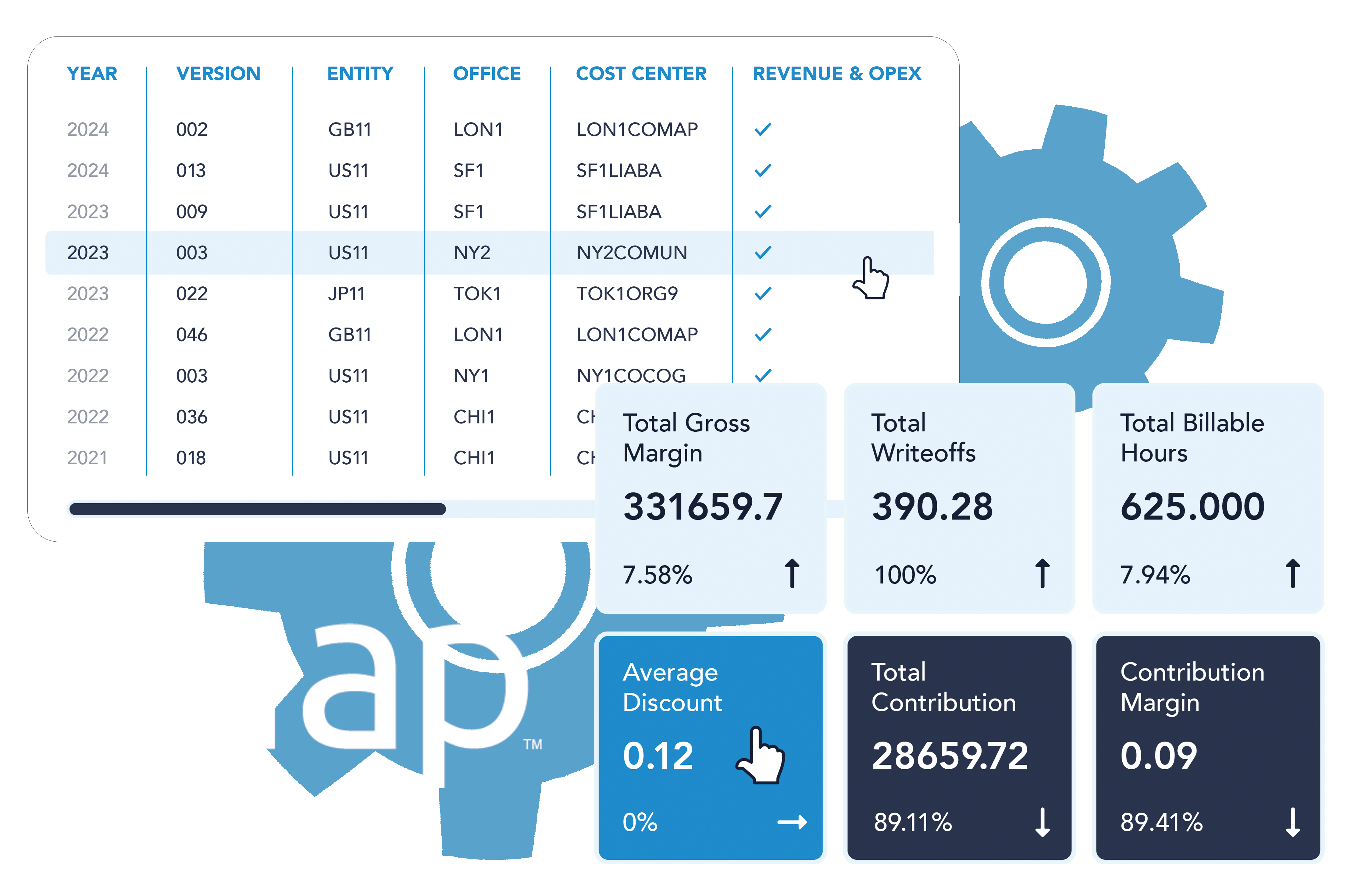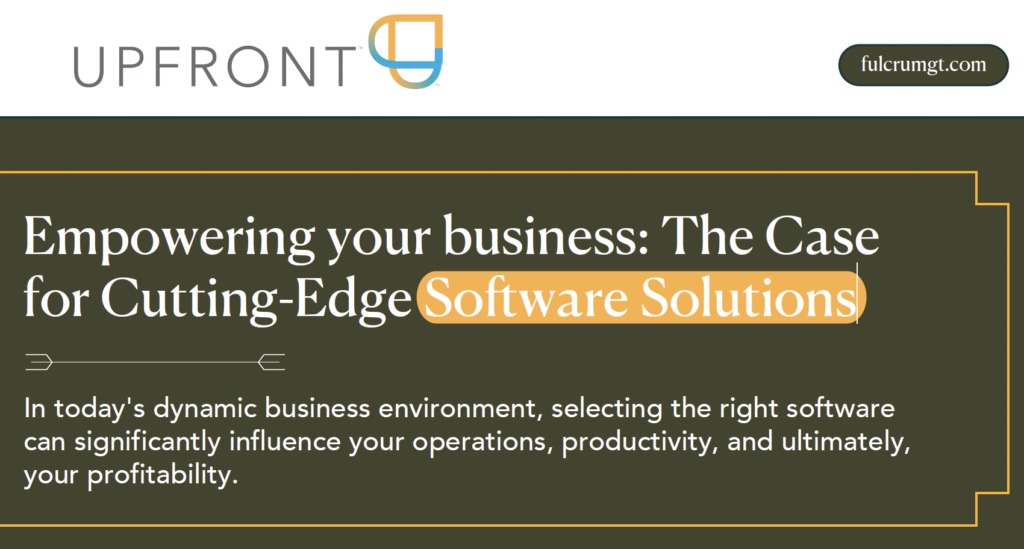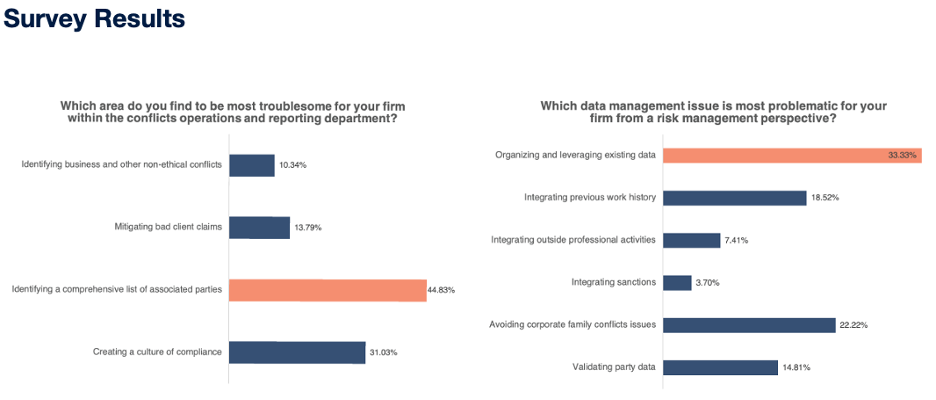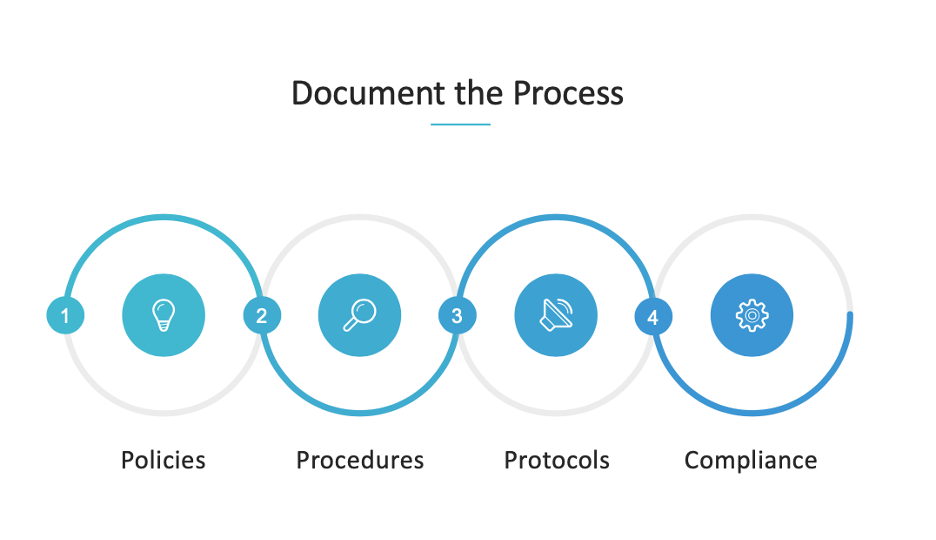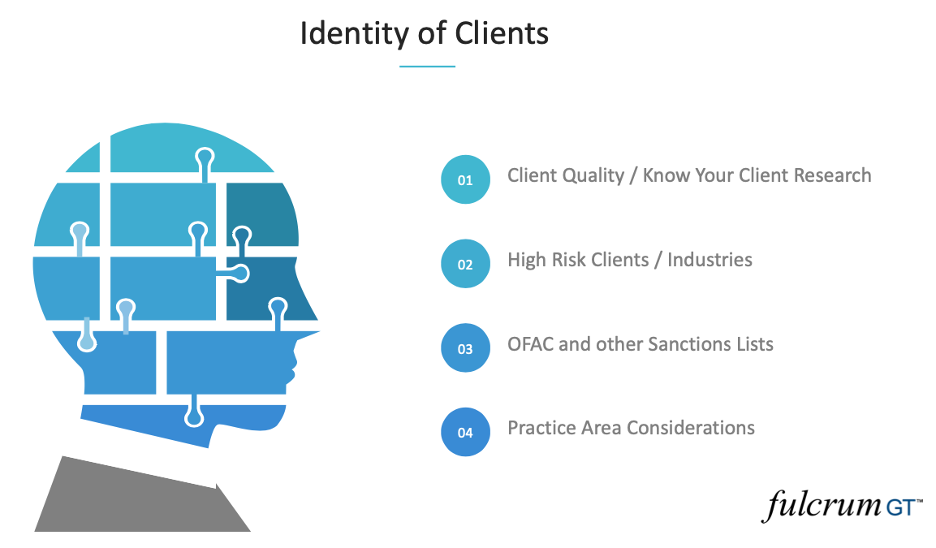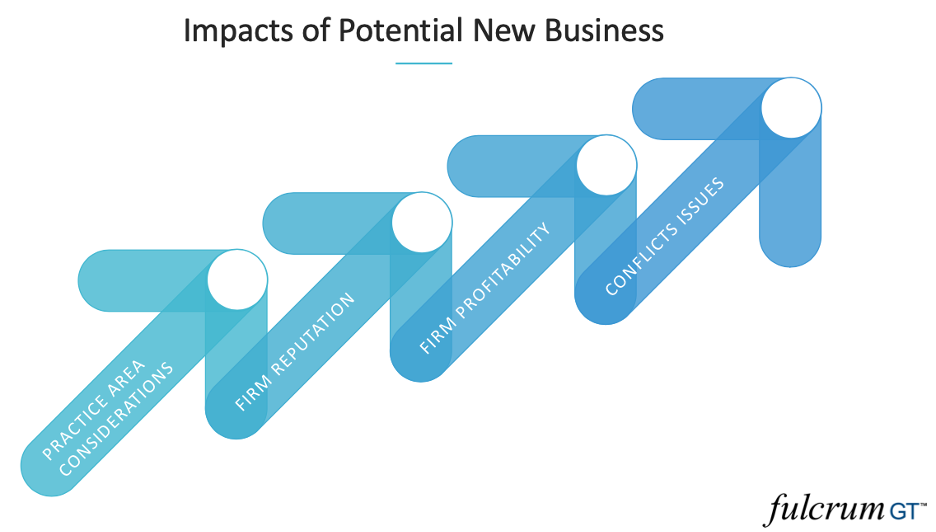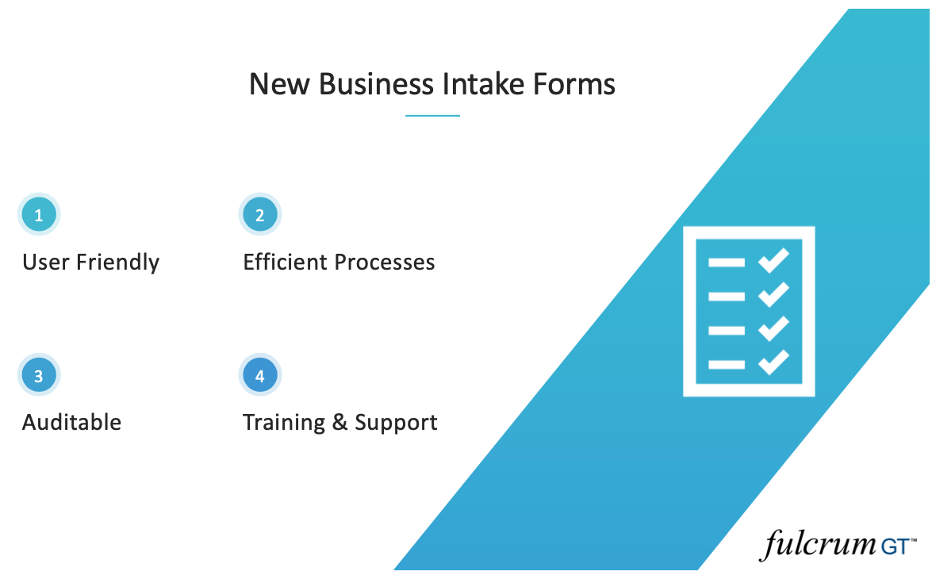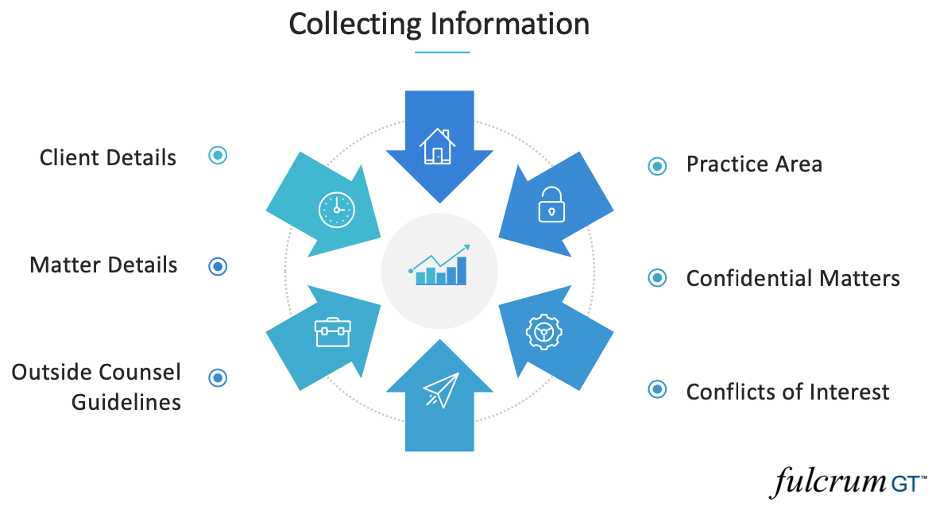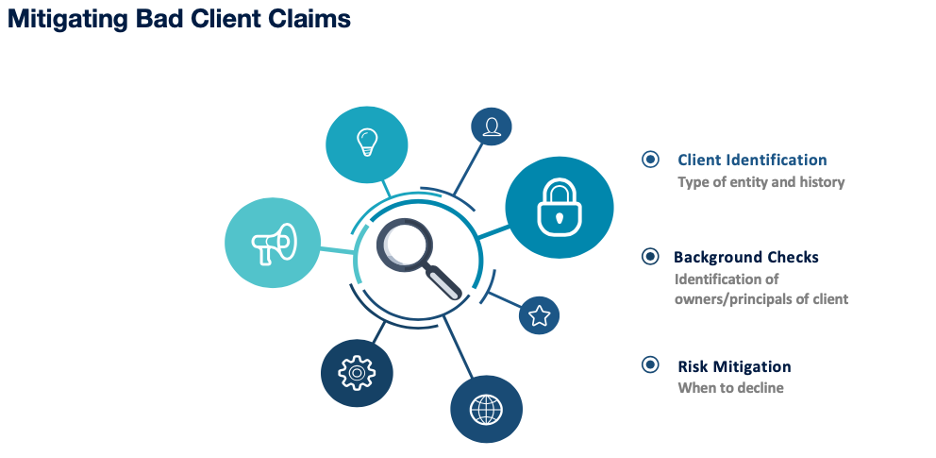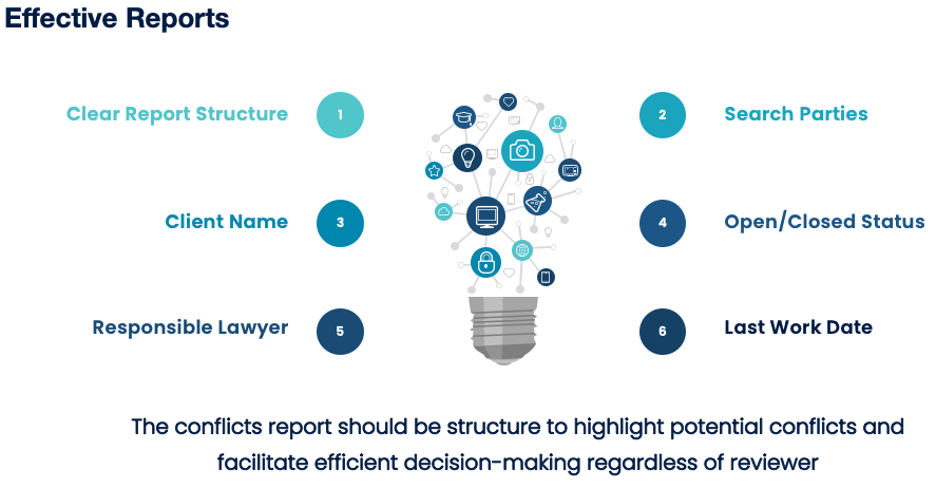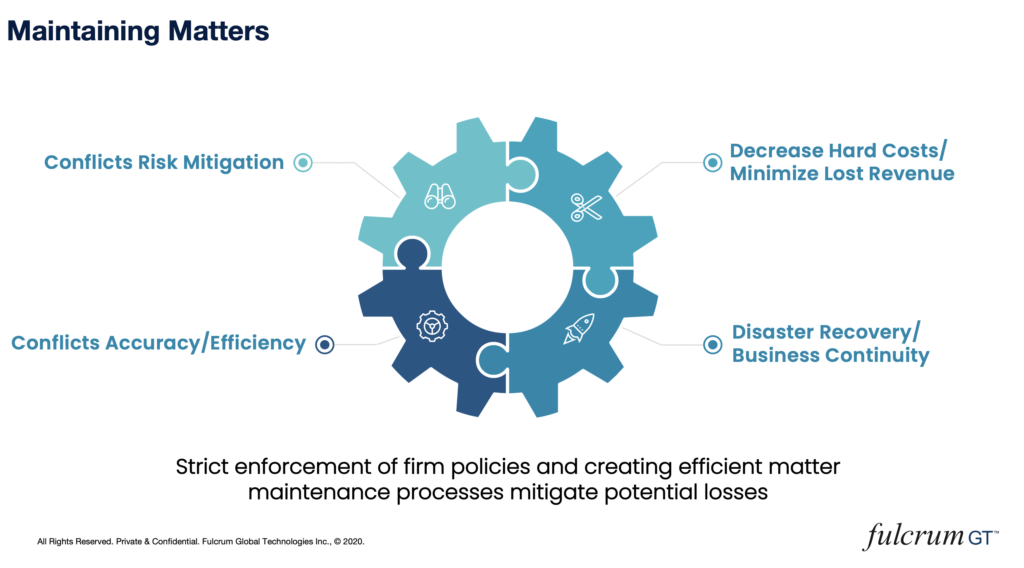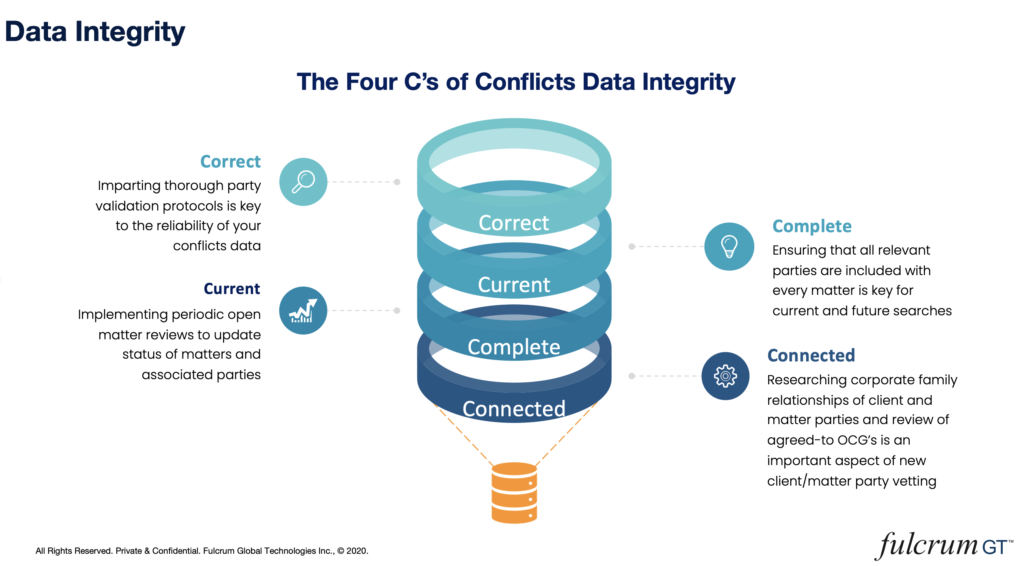Fulcrum GT, provider of the leading digital business platform for legal and professional services, announces the launch of the latest addition to its popular Upfront™ new business intake platform. SCREENS™ is now available as a software-as-a-service case management solution for coordinating client evaluation, legal conflicts management, and market research.
As part of the Fulcrum Upfront new business intake and conflicts management platform, SCREENS reduces risk by simplifying the creation and management of ethical walls, all tailored to the law firm’s needs. It effectively takes new business intake and conflict risk practices to the next level.
The tool allows users to create and manage ethical screens, supports automated notifications to inform users of screens, monitors the need for ongoing screens and integrates to secure the necessary downstream systems. SCREENS also includes a management dashboard that provides users with a view of the screens to which they are subject and for administrative personnel to view and manage all screens in place across the firm.
“Risk management remains a high priority across the legal spectrum for law firm leaders as well as corporate executives and general counsel, and we remain committed to evolving our offerings to ensure they meet the needs of our clients today and into the future,” says Fulcrum Associate Director of Risk Management Casey Beck. “Fulcrum Upfront customers have expressed enthusiasm about the add-on, citing its efficiency and flexibility in better managing ethical walls.”
The new SCREENS solution is part of Fulcrum’s Upfront intelligent workflows that simplify compliance with anti-money laundering and know your client standards as part of core new business intake and conflicts management. SCREENS allows users to create and maintain ethical screens and enforce those screens with downstream systems, integrating conflict search results and conflict reports as well as with third-party compliance systems.
SCREENS features a comprehensive dashboard of all screens and offers automatic updates to screens in place for specific cases and tools for monitoring and optimising their effectiveness. The solution facilitates memos, acknowledgments, and real-time analytics. Every action taken within SCREENS is fully auditable, ensuring complete transparency and accountability.
About Fulcrum GT
Fulcrum GT is the leading provider of secure, reliable business solutions designed for professional services firms, including legal, accounting, and consulting firms. The Fulcrum Digital Business Platform simplifies and standardises business operations to help firms run smoothly, efficiently, and effectively.
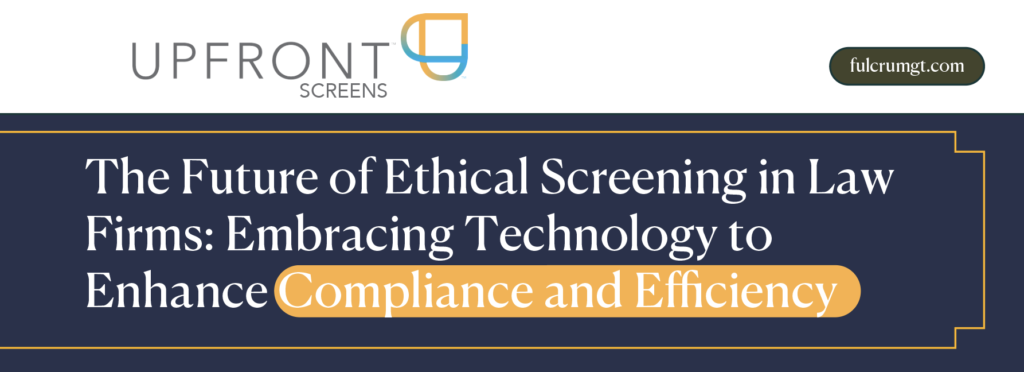














:format(webp)/f/102444/8000x4501/53e29b2c82/header-connect-bi-622-v1.png)
:format(webp)/f/102444/8000x4501/f451c8829b/header-connect-hcm-622-v1.png)
:format(webp)/f/102444/8000x4501/7bd43e9510/header-connect-time-622-v1.png)


